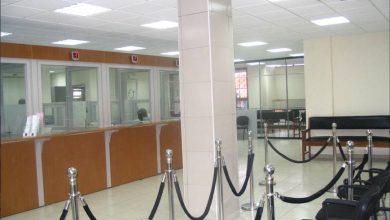When the private sector can’t breath
Taking his turn during the inaugural Private Sector Labs under the Presidential Delivery Unit last Friday, Malawi Confederation of Chambers of Commerce and Industry (MCCCI) president Lekani Katandula lamented the poor business environment prevailing in the country.
He mentioned unreliable power supply and, ironically, the high tariffs for the same as leading bottlenecks to doing business in Malawi.
Katandula, who is also Illovo Sugar (Malawi) plc managing director, could not have put it better.
Electricity is one thorn in the flesh that has rolled back industrial growth in this country. Come to think of it, 58 years after attaining independence, Malawi’s electricity generation capacity currently stands at 265 megawatts (MW) against an estimated demand of 800MW.
If you ask electricity consumers in the country when last they had uninterrupted supply of power from the national grid through Electricity Supply Corporation of Malawi (Escom), a majority of them will likely tell you they do not recall.
Electricity supply is so erratic to the point that in rare cases where Escom supply goes uninterrupted one is tempted to call the faults helpline to report about a fault that has left their area having power all day.
Malawi is yearning to lure foreign direct investment (FDI), but unreliable power supply is a disincentive when it comes to attracting investors as no business would want to put their capital where they will incur extra costs through power generation in form of stand-by or back-up power sources.
Few years ago, energy experts estimated that power outages reduce economic growth by between two percent and four percent with education being among the key sectors that are affected. In 2016 or thereabouts, Malawi was banded alongside Burkina Faso, Cameroon and Niger as examples of countries with more than 80 in every 100 primary schools having no access to electricity in classrooms for lighting or powering computers.
It really pains to see that 58 years after independence, Malawi is predominantly dependent on one source of energy, hydro-electricity.
Energy journals estimate that Africa is rich in solar, wind, hydro and geothermal power sources yet over 600 million or two thirds of people on the continent live in darkness.
In Malawi, Escom struggles to consistently supply power to just 10 percent of the population connected to the national grid.
Poor or low financial investment in the energy sector by most African governments, including Malawi, contributes to the unreliable energy supply. Above all, corruption and under-pricing of electricity further worsen the situation.
In the case of Malawi, there has been a lack of meaningful investment in the energy sector in the post-single party era from 1994. Most of the hydro-electric plants were developed between the 1960s and early 2000s.
The Kapichira Hydro Power Station phase II was done over a decade ago and the plant is currently out of use after being damaged by Tropical Cyclone Ana, thereby taking 130MW off the national grid.
Beyond that, it has been more talk and less action. We have heard about the 300MW Coal-fired Electricity Project and several solar projects yet to see the light of the day.
In Sub-Saharan Africa, one finds the world’s lowest access to electricity at an average of 22 percent of the population compared to Latin America with 80 percent and South Asia at 60 percent access.
For the record, with about 10 percent access rate, Malawi is at the low end in the Sub-Saharan Africa region.
Malawians have had enough of unreliable power supply in recent years. Businesses are failing to produce and operate at optimum levels due to lack of reliable electricity.
President Lazarus Chakwera’s administration has an ambitious target to increase electricity generation to 1 000MW by 2025 or thereabouts. It can be achieved with focus, especially in terms of funding. For instance, government can issue an infrastructure bond or obtain foreign loans to fund such projects.
If Malawi is to move to middle income status by 2030 as envisaged in the Malawi 2063, the country’s long-term development strategy, industrialisation is key and electricity is the bedrock of such aspired direction.



